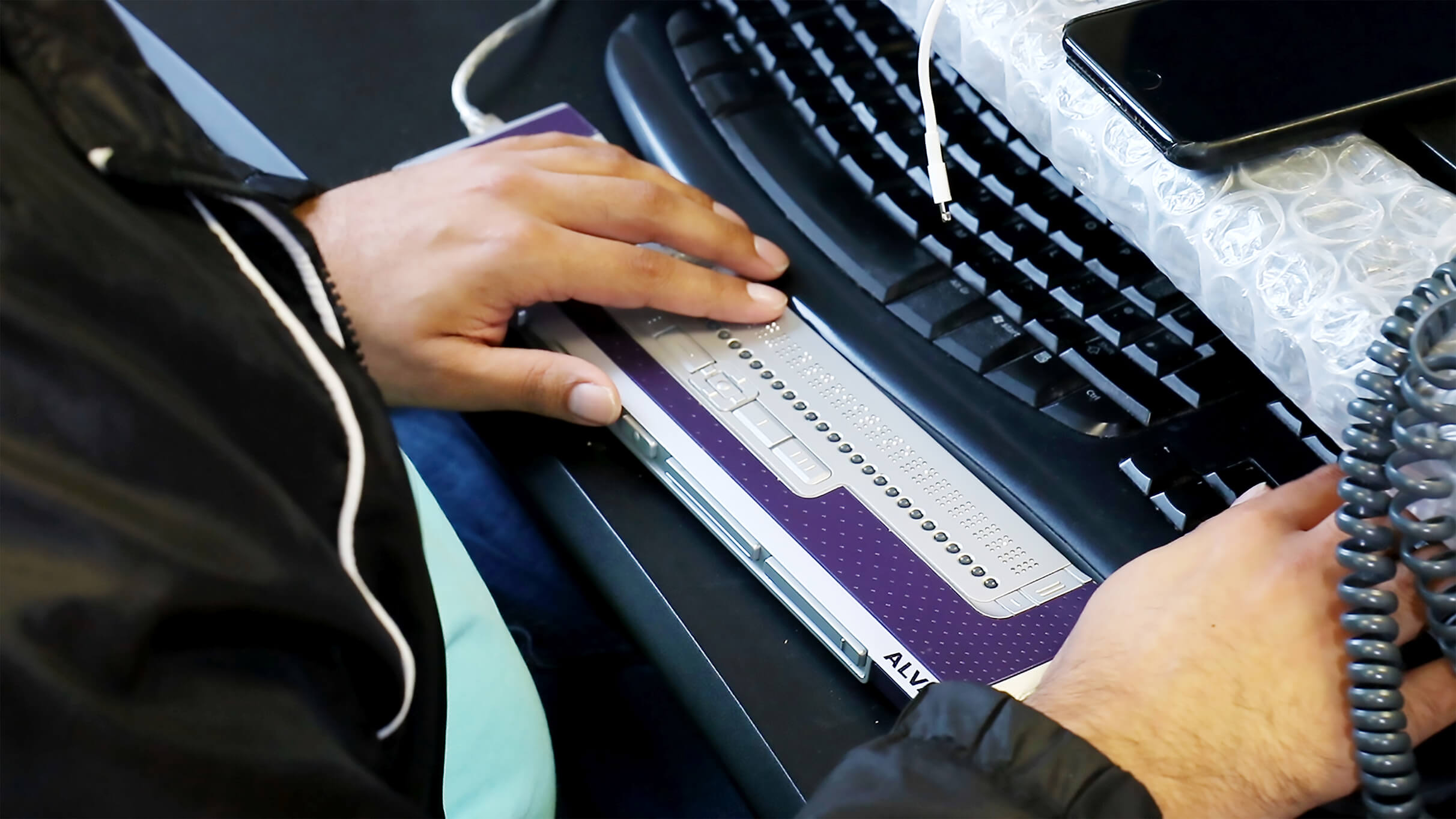Improving experiences for all our customers is something that we obsess over. We know that advancements in technology and inclusive design can help unlock solutions that empower people with disabilities. We also recognize the need to work together — across the industry — to ensure that no one is left behind.
That is why Microsoft collaborated with Apple and industry organizations to develop an USB-IF Human Interface Design (HID) standard for braille displays. Announced by the USB Implementers Forum (USB-IF) today, the standard will enable plug and play support for braille displays and has received broad support from the tech industry, assistive technology (AT) companies and non-governmental organizations advocating for people who are blind or have low vision.
“Braille is the key to literacy, education, employment and success for blind people all over the world,” said Mark Riccobono, president of the National Federation of the Blind. “An HID standard that allows the seamless integration of refreshable braille displays across devices will make it easier for braille readers to use this critical tool at home, at school, on the job or on the go. The National Federation of the Blind is proud to be a partner in collaboration across technology companies to make braille a game changing priority in the twenty-first century.”
By working together across companies, technologies and devices, we can advance technology for people with disabilities and create a consistent approach for AT providers. The result of HID standardization will improve braille display implementation, decrease costs and time to market, and ultimately empower people who are blind and have low vision. This will simplify development, removing the need for braille devices to have custom software and drivers created for a particular operating system or screen reader. We anticipate support for the standard starting in 2019.
Braille is a critical component for literacy, education and employment for people who are blind or have low vision. The USB-IF HID standard for braille displays has received broad industry support, underscoring the need for plug and play support. Members of the USB-IF HID Working Group include Microsoft, Apple and Google. We have also seen support from organizations like the National Federation of the Blind and Vision Australia, in addition to AT companies like Help Tech GmbH, Baum, HumanWare, Orbit, Bristol Braille, Dolphin Computer Access, Freedom Scientific and NV Access.
“Just like most sighted people, our SuperNova users regularly switch between using their Windows PC and their iPhone. Effortlessly moving your braille display between those devices will be a hugely popular move for our customers,” said Mike Hill, Technical Director, Dolphin Computer Access.
The World Health Organization estimates that 253 million people have a form of visual impairment. Technology can play an important role in creating opportunities for people who are blind or have low vision, and we have the responsibility to help create a level playing field for everyone. We also live in a modern world where customers expect technology to work out of the box, across devices and platforms.
“The ability to quickly and easily connect braille displays to a range of devices at home, at school and in the workplace will be of great benefit to users, especially those who use their devices across several different platforms,” said Damian McMorrow, access technology product owner, Vision Australia.
We know that technology can help unlock barriers for people, and braille is a critical form of communication for many people around the world, whether at home or at work. The new standard is another example of how we can work together to create opportunities for more people and, ultimately, help improve the unemployment rate for people with disabilities.
Together, we can work to create a more inclusive world.

